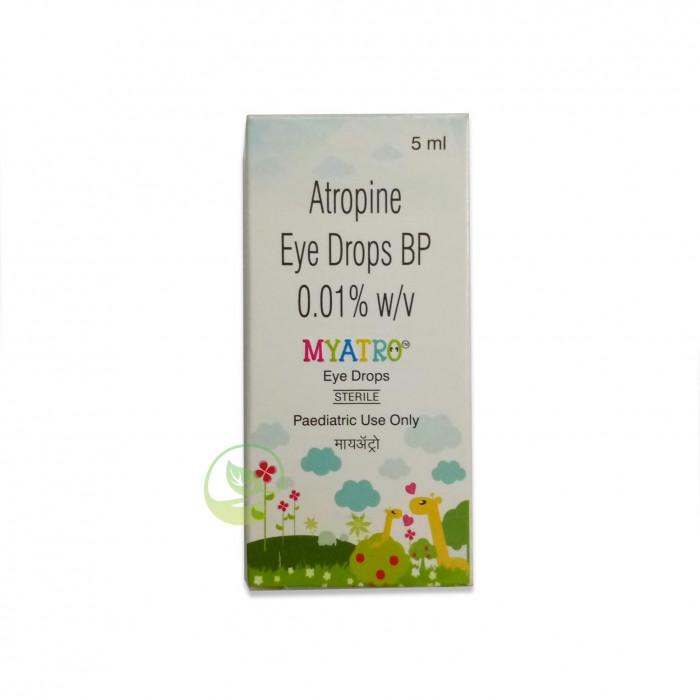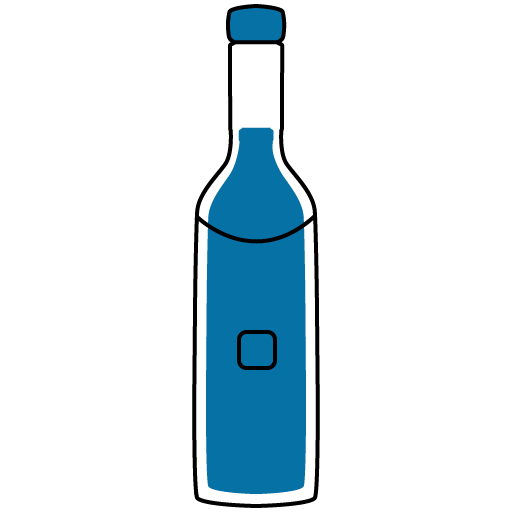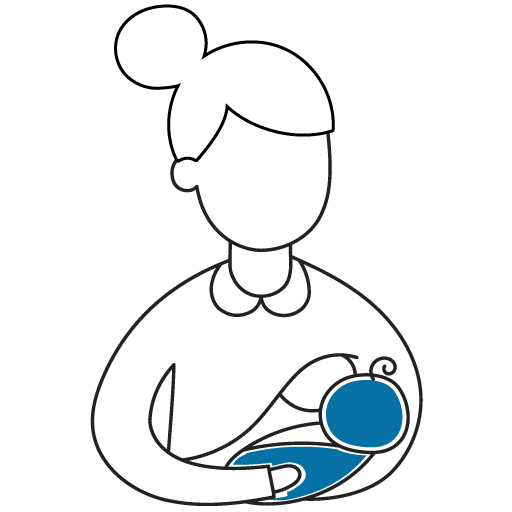
✔ 100% Authentic Product
👁️ Currently Viewing 1248
100% Genuine Products, Guaranteed
Safe & Secure Payments, Always
Fast, Secure & Efficient Delivery
Proper Packaging
 Cash on Delivery - All over Bangladesh
Cash on Delivery - All over Bangladesh Regular Delivery - 12-24 Hours, Dhaka City*
Regular Delivery - 12-24 Hours, Dhaka City* Regular Delivery - 24-48 Hours, All Over Bangladesh*
Regular Delivery - 24-48 Hours, All Over Bangladesh* ফ্রি ডেলিভারিঃ - ৯৯৯ টাকা+ অর্ডারে, ঢাকা
শহরে
ফ্রি ডেলিভারিঃ - ৯৯৯ টাকা+ অর্ডারে, ঢাকা
শহরে ফ্রি ডেলিভারিঃ - ২৯৯৯ টাকা+ অর্ডারে, ঢাকার
বাহিরে
ফ্রি ডেলিভারিঃ - ২৯৯৯ টাকা+ অর্ডারে, ঢাকার
বাহিরে
✅ Description:
Myatro 0.01% Eye Drop is prescribed to address vision issues, specifically myopia, where a child experiences clear vision for nearby objects but struggles with distant vision.
It is recommended to use Myatro 0.01% Eye Drop exclusively in the affected eye, with the dosage and duration determined by the type and severity of the condition. Adhering to the doctor's prescribed dose, timing, and administration method is crucial.
Before and after applying Myatro 0.01% Eye Drop, it's essential to thoroughly wash hands with soap and hot water to minimize infection risks. Administer the drops while the child is lying down, looking up and to the side. Ensuring the child remains still during administration is important. Place the drops in the lower eyelid, away from the nose, and instruct the child to keep their eyes closed for a while to facilitate proper absorption and prevent spillage.
Caution the child against rubbing their eyes immediately after using the medicine to avoid potential redness or irritation. Additionally, it's advised that the child refrain from wearing contact lenses during the treatment as the medication may damage the lenses. Abruptly discontinuing the medication, even if the child feels better, is not recommended. The prescribed course should be completed, and any confusion should be addressed with the child's doctor.
While Myatro 0.01% Eye Drop may cause minor and temporary side effects such as blurry vision, photophobia, eye irritation, and stinging, these typically diminish after a few doses. If these effects persist or become bothersome, prompt reporting to the doctor is advised.
Safety Advices

Alcohol
CAUTION
There is no known interaction of Myatro 0.01% Eye Drop with alcohol, but it is important to consult your physician if you have a habit of consuming alcohol regularly.

Pregnancy
CONSULT YOUR DOCTOR
As there is limited information about the safety of this medicine during pregnancy, this medicine should only be used if prescribed by a doctor.

Breastfeeding
CONSULT YOUR DOCTOR
Be cautious while breastfeeding during the treatment because prolonged use of this medicine might reduce milk production but it does not affect the breastfed baby.

Driving
UNSAFE
Do not allow your child to ride or play outdoors, as MYATRO may cause light sensitivity and blurred vision.

Kidney
No interaction found/established

Liver
No interaction found/established
✔️ Uses of Myatro 0.01% Eye Drops 5ml
- Treatment of Myopia
✔️ How does Myatro 0.01% Eye Drops 5ml work?
Myatro 0.01% Eye Drops 5ml works by blocking the effects of a chemical messenger called acetylcholine in the eyes. As a result, it relaxes the eye muscles (ciliary muscle), reduces tension in the eye, and makes the eyes focus better.
✔️ Side Effects of Myatro 0.01% Eye Drops 5ml
- Blurred vision, eye irritation
- Sensitivity to light (photophobia)
- Allergy-like sore, swollen, red, or itchy eyes
- Headache
✔️ Quick Suggestions:
- Once opened, do not keep Myatro 0.01% Eye Drops for more than 28 days at home. Discard the leftover medicine.
- To avoid contamination, do not touch the tip of the dropper to any surface, including the eyes, eyelids, or eyelashes.
- If your child is using more than one eye medicine, maintain a gap of a few minutes between the two different medications.
- Adhere to the number of drops as suggested by your child’s doctor. Do not use more or less.
- Go for your child’s regular eye check-ups before and during the treatment.
- Only give Myatro 0.01% Eye Drops to your child for their current problem. Never save medicine for future illnesses.
✔️ Indication
Myatro 0.01% Eye Drops 5ml is used to treat inflammation (swelling, redness, etc) in the eyes. It is also used to dilate the pupil of the eye before an eye examination.
✔️ Pharmacology
Myatro Eye Drop, with an active ingredient likely to be tropicamide, acts as a mydriatic, which means it dilates the pupil of the eye. Tropicamide is commonly used in eye examinations to facilitate a thorough examination of the back of the eye (retina) and other internal eye structures. Here is a pharmacological view of how it works:
Tropicamide primarily works by inhibiting the action of a neurotransmitter called acetylcholine. Acetylcholine is responsible for stimulating the muscles that control the size of the pupil.
By inhibiting acetylcholine, tropicamide causes the muscles of the iris (the colored part of the eye) to relax, leading to dilation of the pupil. This dilation allows the eye care professional to examine the internal structures of the eye more easily.
✔️ Dosage & Administration:
Use Myatro 0.01% Eye Drops 5ml as advised by your physician. It is for ophthalmic use only. Instill a few drops of the medicine in the affected eye(s). Do not touch the tip of the container with your fingers. Your doctor will decide the correct dose and duration for your child depending upon their age, body weight, and health condition.
✔️ Interaction
Before using Myatro 0.01% Eye Drops 5ml, inform your doctor if your child is taking any of the following medicines such as:
- Medicines used to treat glaucoma (Ex. timolol)
- Medicines used to treat muscle weakness (Ex. metaxalone, cyclobenzaprine)
- Medicines used to treat allergic reactions (Ex. levocetirizine, diphenhydramine, chlorpheniramine)
- Medicines used to treat Parkinson's disease (Ex. levodopa, carbidopa)
- Medicines used to treat depression (Ex. phenelzine, isocarboxazid, sertraline)
- Potassium citrate or potassium supplements (used to treat potassium deficiencies)
✔️ Contraindications
- If you are allergic to Atropine or any of the ingredients of Myatro 0.01% Eye Drops 5ml.
- If you are suffering from high pressure inside the eyes (glaucoma).
✔️ Precautions & Warnings
Myatro 0.01% Eye Drops 5ml is not recommended for use if your child:
- Has closed-angle glaucoma (increased pressure in the eye)
- Has a family history of glaucoma
Myatro Eye Drops may interact with various other medications. It's crucial to inform your doctor about all the medicines you are currently taking, including prescription drugs, over-the-counter medicines, herbal supplements, and vitamins. This information helps your healthcare provider assess potential drug interactions and make informed decisions about your treatment plan.
Myatro Eye Drops can cause temporary symptoms such as blurred vision and sensitivity to light. If you experience these effects during your treatment, it is advisable to avoid activities that require clear vision, such as driving or operating machinery, until your vision returns to normal. Safety should be a priority to prevent accidents or injuries.
To prevent contamination, it is essential not to touch the tip of the dropper to any surface. This precaution helps avoid the introduction of bacteria into the eye drops, maintaining their sterility and safety for use. Following hygienic practices is crucial to ensure the effectiveness of the medication.
If you wear contact lenses, it is recommended to remove them before installing Myatro Eye Drops. Contact lenses can absorb the medication and may be reinserted after the eye examination, as advised by your physician.
✔️ Storage Conditions
- Keep Myatro 0.01% Eye Drops 5ml out of reach of children
- Store at room temperature
⚠️Disclaimer:
At ePharma, we’re committed to providing accurate and accessible health information. However, all content is intended for informational purposes only and should not replace medical advice from a qualified physician. Please consult your healthcare provider for personalized guidance. We aim to support, not substitute, the doctor-patient relationship.







